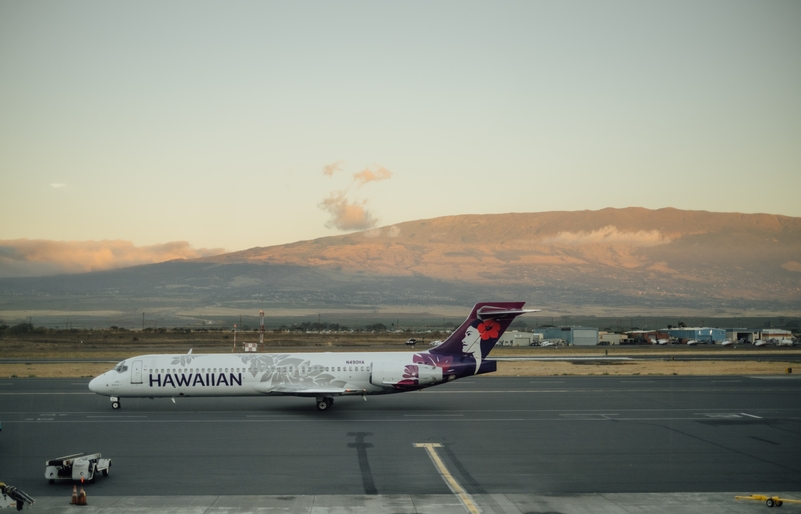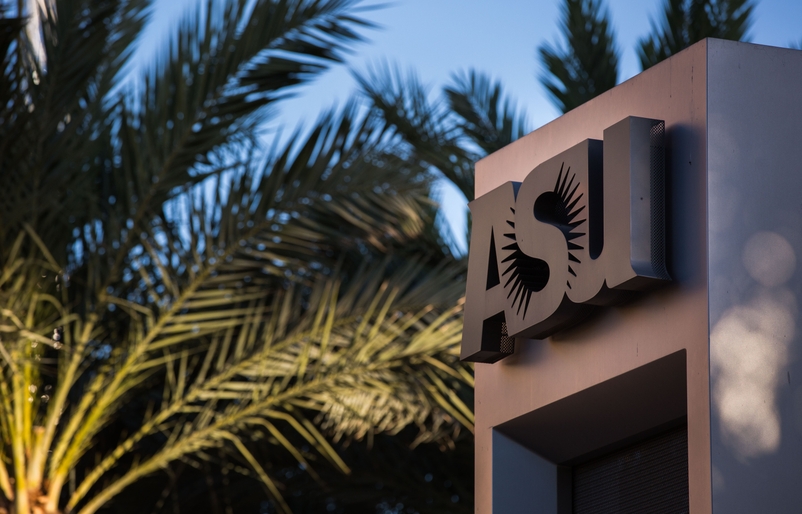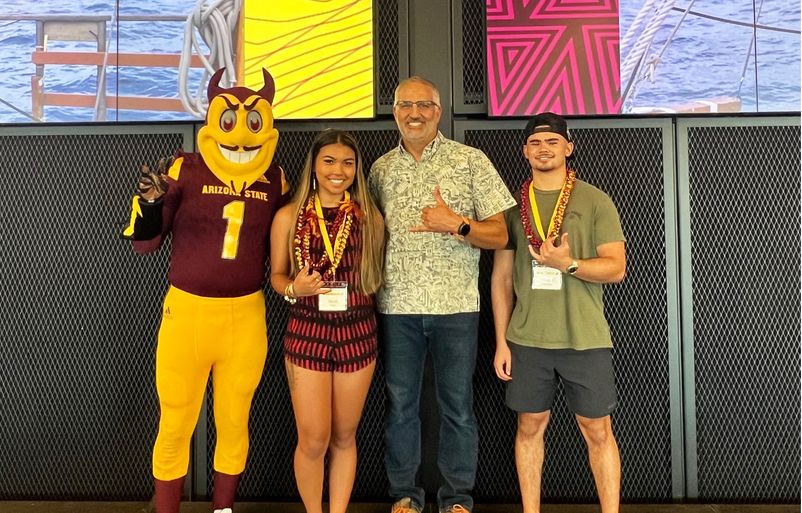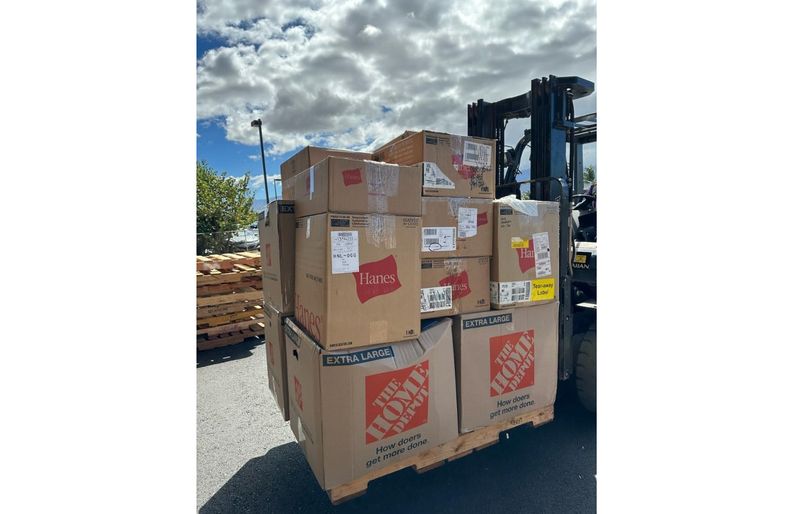AUG. 25, 2:00 PM HST
This post served to provide media with timely information related to Hawaiian's response in the immediate aftermath of the wildfires. As of today, time-stamped updates will no longer be shared on this page. Manaʻo readers are encouraged to subscribe to the blog for the latest stories and updates on how Hawaiian is supporting West Maui throughout its long road to recovery.
Previous Updates
AUG. 18, 3:00 PM HST
Hawaiian Airlines continues to open the bellies of its aircraft to assist organizations embarking on heroic relief efforts – including Maui Humane Society, which has worked around the clock to save the lives of animals and pets injured, lost or displaced during the West Maui wildfires. Since the fires erupted last week, Hawaiian has carried over 200 donated kennels to Kahului, including a shipment of over 100 crates for Island Pet Movers to assist Maui Humane Society with moving pets off the island.
To read more about Hawaiian's movement of donated kennels, click here.

Five donated kennels being loaded into the cargo hold of flight HA206 to Kahului from Honolulu.
Twelve thousand HawaiianMiles members have donated nearly 107 million miles to the American Red Cross of Hawaii’s West Maui emergency response. As of today, 137 million miles, which includes Hawaiian’s match of 30 million miles and is equivalent to 18,000 flights, have been raised to help mobilize the nonprofit's volunteers and personnel supporting West Maui residents affected by the disaster.
For information on how to donate miles and other impactful ways to mālama Maui, click here.
AUG. 17, 11:30 AM HST
In answering a colleague’s call for help, Hawaiian Airlines flight attendants mobilized members of a Facebook group to send roughly 500 pounds of items to Maui families in need. Since Sunday, Hawaiian’s cargo team has accepted approximately 3,900 pounds of employee shipments, with the most common items being baby essentials, dry and canned food items, clothing, toiletries and empty gas cans. To read more about this effort, click here.
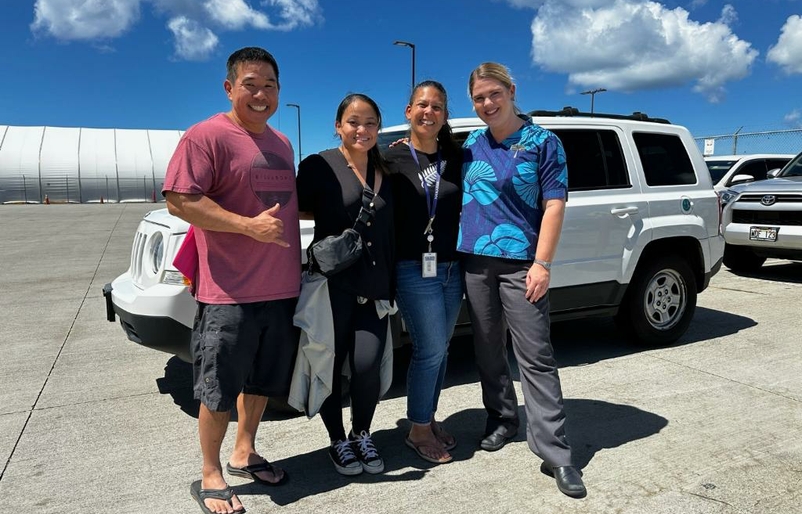
Flight Attendants Curtis Kawamura, Anna Sable, Erika Ledesma and Carley Tomagan
As of Aug. 16, a special Maui relief fund under Hawaiian Airlines’ Wings of Hope program, which enables the carrier's employees to support each other during times of severe hardship, has collected 398 donations totaling $153,800 for teammates whose homes were lost or damaged in the West Maui wildfires. Wings of Hope is open year-round for financial contributions and funds are received in the form of payroll deductions, checks and cash donations from employees and board members.
AUG. 16, 4:10 PM HST
In less than 24 hours after Hawaiian Airlines announced an expanded partnership with Hawaiʻi Foodbank and Maui Food Bank, the carrier’s Community and Cultural Relations team coordinated a company-wide food and supply drive to support the West Maui community.

Team Kōkua volunteers working the donation drop-off site at Hawaiian's cargo facility.
Seventy employees yesterday volunteered with Team Kōkua to staff collection sites at the airline’s corporate headquarters and Charles I. Elliott Maintenance and Cargo Facility, loaded vans with donations from their colleagues and worked at Hawaiʻi Foodbank to organize donated items for those impacted by the wildfires.

Team Kōkua volunteers organizing pantry donations at the Hawaiʻi Foodbank.
By the end of the day, over 10,000 pounds (about half the weight of a school bus) of goods were donated to Hawaiʻi Foodbank and Maui Food Bank for people displaced by the wildfires. Items included baby formula and food, feminine products, diapers, toiletries, canned proteins and meals, rice and grains, non-perishable snacks, peanut butter and meal bars.
To read more about Hawaiian's food and supply drive, click here.
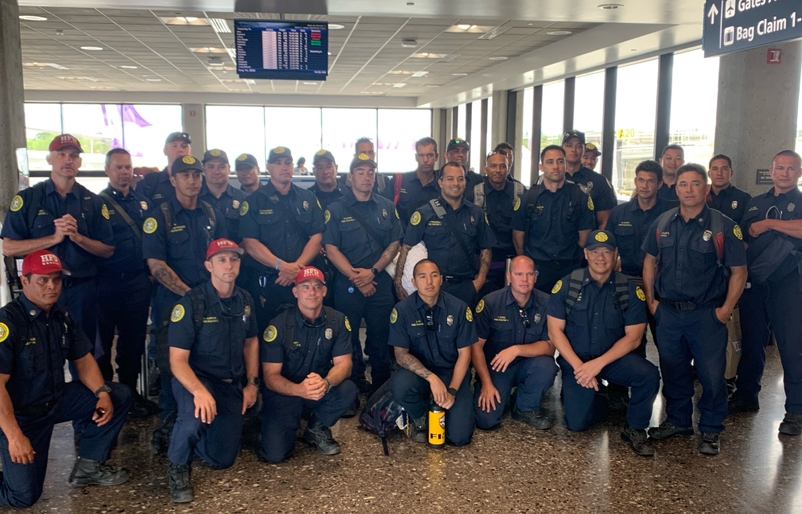
Firefighters with the Honolulu Fire Department at the arrival gate of HA185 in Honolulu following a deployment to Maui.
Hawaiian Airlines is also grateful for the work of first responders and continues to transport fire and police personnel – including members of the Honolulu Fire Department (HFD) and the Federal Fire Department – to and from Kahului to help West Maui communities affected by the wildfires.
For HFD's news release on its recent Maui deployment, click here.
AUG. 14, 3 PM HST
Hawaiian today announced it is working with Hawaiʻi Foodbank and Maui Food Bank on food collection and distribution. Hawaiian will donate $150,000 ($50,000 each to Hawaiʻi Foodbank, Maui Food Bank and the Hawaiʻi Community Foundation) to further support the organizations’ wildfire relief work.

Image credit: Hawaiʻi Foodbank
Disaster relief boxes assembled by the Hawaiʻi Foodbank.
In addition, Hawaiian has established the Mālama Maui Desk to respond more efficiently to the many organizations and individuals seeking flight, cargo or volunteer support. The request form can be found at www.hawaiianairlines.com/malamamaui, a new website dedicated to Maui relief information. In addition to the Mālama Maui Desk, the page serves as a resource on ways that our community in Hawaiʻi and globally can help respond to the tragic wildfires.
The carrier is also supporting Maui Ola: A benefit concert for Maui, a live concert and broadcast fundraiser at 5 p.m. on Aug. 20 at the Bernice Pauahi Bishop Museum, by flying in artists, event organizers and participants, and providing volunteers.
To read more about Hawaiian Airlines' next phase of support for the Maui community, click here.
AUG. 11, 7:15 PM HST
A message from our CEO:
Additonal resources:
AUG. 11, 11:30 AM HST
Hawaiian Airlines today added an additional flight from Kahului to Honolulu to support the ongoing evacuation of displaced visitors and residents. We will also fly our full regular schedule of some 25 roundtrips between Honolulu and Maui today and into the weekend.
Hawaiian transported more than 6,600 people out of Maui yesterday and expects to carry more than 17,000 visitors and residents out of the island in the 72 hours since the fires broke out. Our priority has been to keep moving people safely from and within our islands and facilitate the work of federal, state and local agencies.
Hawaiian is grateful for the overwhelming generosity of some 10,000 HawaiianMiles members who have donated miles equivalent to more than 9,500 interisland flights to the American Red Cross of Hawaii. Hawaiian has provided the equivalent of another 4,000 free flights for use by volunteers and community members in need.
Members throughout our network have also expressed a desire to drop off boxes of supplies at our stations to be shipped to Maui. While we are beyond grateful for our customers' willingness to give and continue to accept essential cargo, we encourage that donations be made to organizations best equipped to manage relief such as the American Red Cross.
AUG. 10, 1 PM HST
The images of Lāhainā burning – enveloped in an impenetrable cloud of black smoke – have been difficult to witness. Our hearts are with our community members, employees and all those devastated by the Maui fires. As Hawaiʻi’s hometown carrier, we pledge to support disaster response efforts until the demanding work of recovery is complete.
“This is an incredibly tragic and sad event, and our hearts go out to everyone impacted on Maui and especially those who have lost loved ones,” said Peter Ingram, president and CEO of Hawaiian Airlines. “Our teams across our operation are working tirelessly to help those affected, including our nearly 500 colleagues who call Maui home. We send our deepest condolences to those impacted by the fires and will continue to leverage every resource we have to support the Maui community."
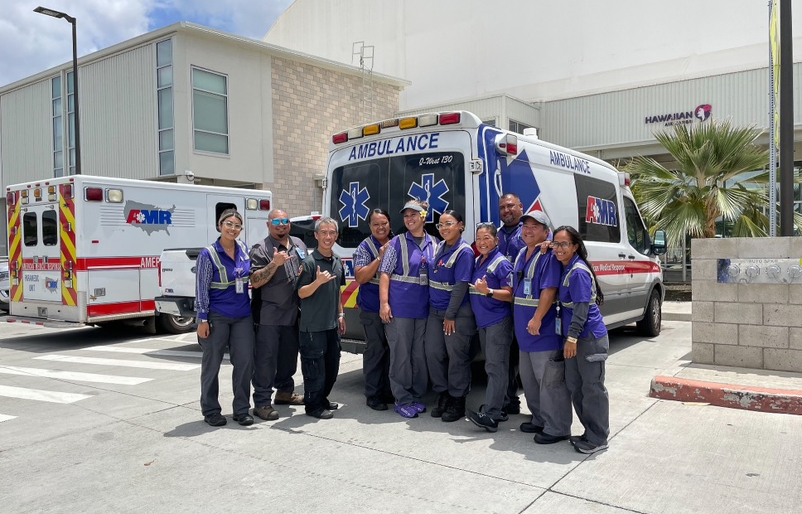
Hawaiian Airlines Cargo is proud to help transport essential medical supplies to Maui and support first responders in providing critical medical care to communities impacted by the wildfires.
Here’s how Hawaiian Airlines has supported response efforts in the first 24 hours:
Facilitating essential travel
-
Ran a full schedule of flights in and out of Maui, including nine additional flights scheduled for today (Aug. 10) and nine that operated yesterday from Kahului to Honolulu to support evacuation efforts. We flew 12,718 seats in and out of Kahului yesterday.
-
Made every main cabin seat from Kahului to Honolulu available at $19 through Aug. 14, so costs would not be an obstacle to those needing to leave.
-
Transported 5,786 guests out of Maui yesterday.
-
Issued a travel waiver to allow guests with travel to and from Maui scheduled through Aug. 31 flexibility to change or refund flights.

Team Kōkua volunteers were deployed at the Daniel K. Inouye International Airport to assist travelers arriving from Maui.
Carrying critical cargo
- Set aside dedicated space on our aircraft to support essential cargo, including life-saving blood and medical supplies, medication, food, water, amenity kits and infrastructure equipment for telecommunications repairs.
- Donated and shipped soft goods and catering items, including 300 bottles of Mananalu water, 550 sandwiches, 3,000 snack items, 1,600 amenity kits, mattress pads, lounging pillows and other supplies, for evacuees arriving at Kahului Airport.
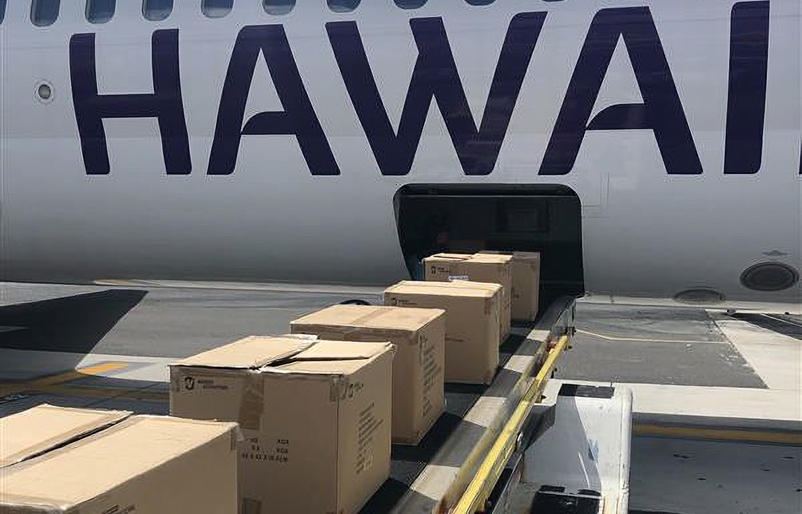
Yesterday, 1,600 amenity kits were loaded onto HA1106 to be distributed to those displaced by the Maui fires.
Caring for guests and employees
- Activated Team Kōkua, Hawaiian’s employee volunteer group, to support guests and staff in Honolulu and Kahului.
- Deployed employee members of the Hawaiian Airlines Emergency Assistance Response Team (HEART) to work at the Honolulu Convention Center and other shelter facilities for visitors.
- Activated employee support resources for team members on Maui and elsewhere who have been personally affected by these tragic events.
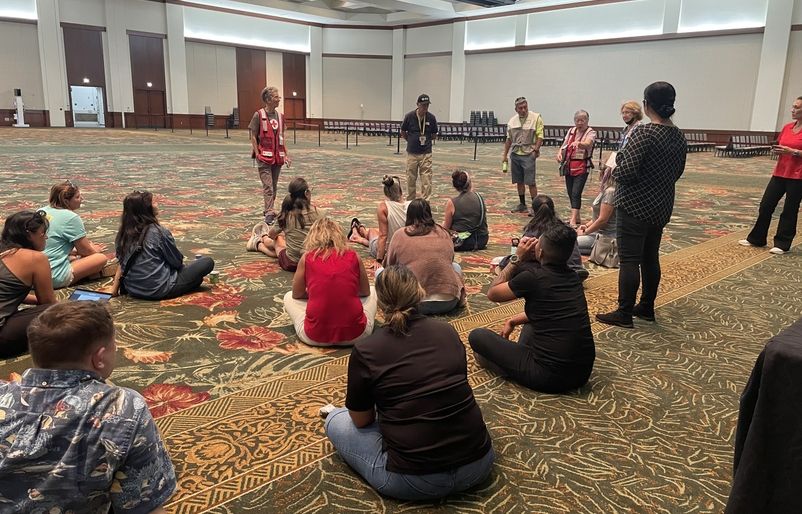
HEART members listening to a volunteer briefing by the American Red Cross and Hawaiian Airlines before serving at the Hawaiʻi Convention Center's temporary shelter.
Partnering for relief efforts
- Donated seats to first responders, including City and County of Honolulu firefighters to help Maui stations battle the ongoing wildfires.
- Nearly 90 million miles (equivalent to 12,000 interisland flights) in joint donation with our HawaiianMiles members to the American Red Cross of Hawaii to facilitate travel for volunteers, support personnel and community members in need.
- We continue to accept donations of HawaiianMiles on behalf of the American Red Cross of Hawaii on our website. To donate your unused miles, click here.
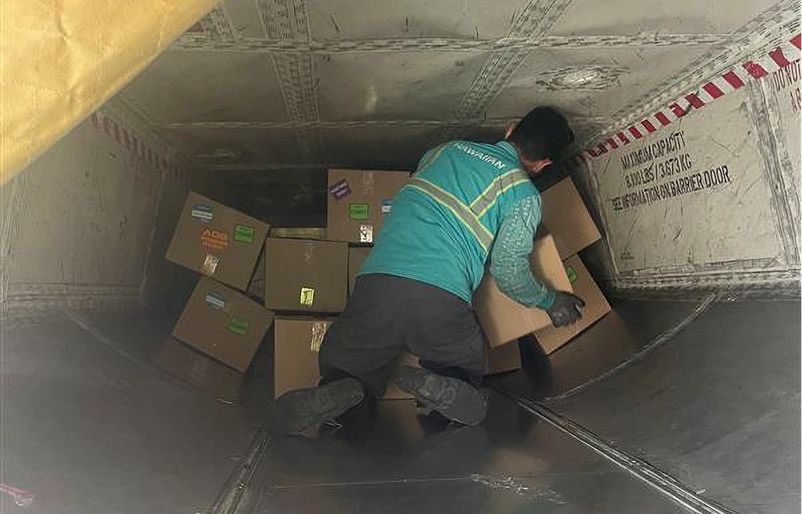
A cargo agent loading boxes of sandwiches on a flight to Kahului.





